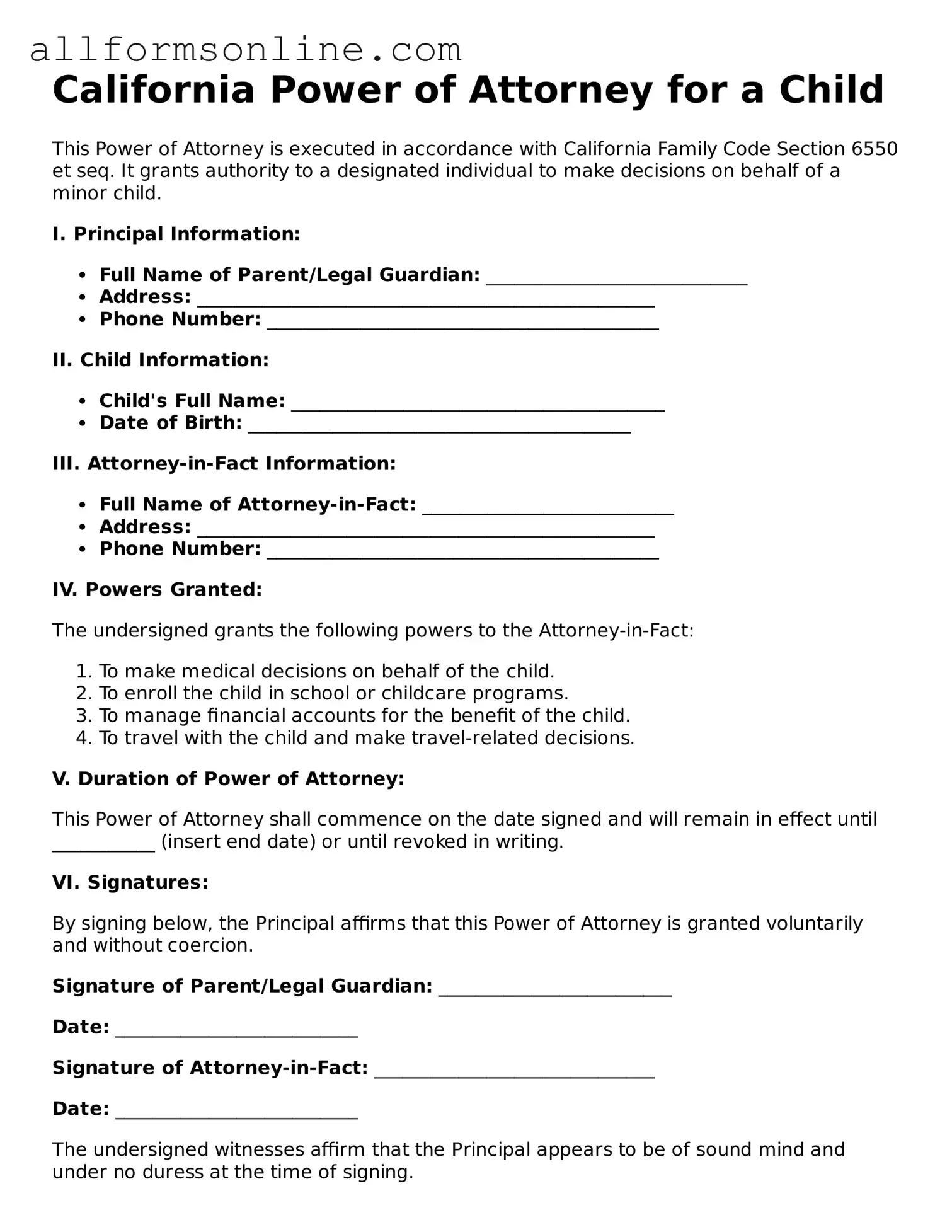What is a California Power of Attorney for a Child form?
The California Power of Attorney for a Child form is a legal document that allows a parent or legal guardian to designate another adult to make decisions on behalf of their child. This can include decisions about education, medical care, and general welfare. It is particularly useful for parents who may be temporarily unable to care for their child, such as during travel, deployment, or other circumstances. The form ensures that the designated person has the authority to act in the best interest of the child during that time.
Who can be designated as an agent in the Power of Attorney for a Child?
Any responsible adult can be designated as an agent in the Power of Attorney for a Child form. This could be a relative, family friend, or trusted neighbor. It’s essential to choose someone who is willing to take on this responsibility and is capable of making decisions in the child's best interest. The chosen agent should also be informed about the child's needs and preferences to ensure that their care aligns with the parent's wishes.
How long is the Power of Attorney for a Child valid?
The Power of Attorney for a Child is typically valid for up to six months, unless it is revoked or a longer duration is specified in the document. However, parents can renew or extend the power of attorney if necessary. It’s important to note that this form does not grant permanent custody; it is intended for temporary situations where the parent or guardian cannot be present.
Do I need to have the Power of Attorney for a Child form notarized?
Yes, the Power of Attorney for a Child form must be signed in front of a notary public to be legally binding. Notarization adds a layer of authenticity to the document, ensuring that the signatures are legitimate and that the person granting the power of attorney understands the implications of the document. It is advisable to keep a copy of the notarized form for your records and provide copies to the designated agent.
Can the Power of Attorney for a Child be revoked?
Absolutely. The parent or legal guardian has the right to revoke the Power of Attorney for a Child at any time, as long as they are of sound mind and able to make that decision. Revocation can be done in writing, and it’s best to notify the designated agent and any relevant parties, such as schools or healthcare providers, to ensure that they are aware of the change. Keeping a record of the revocation is also recommended for clarity and legal purposes.
